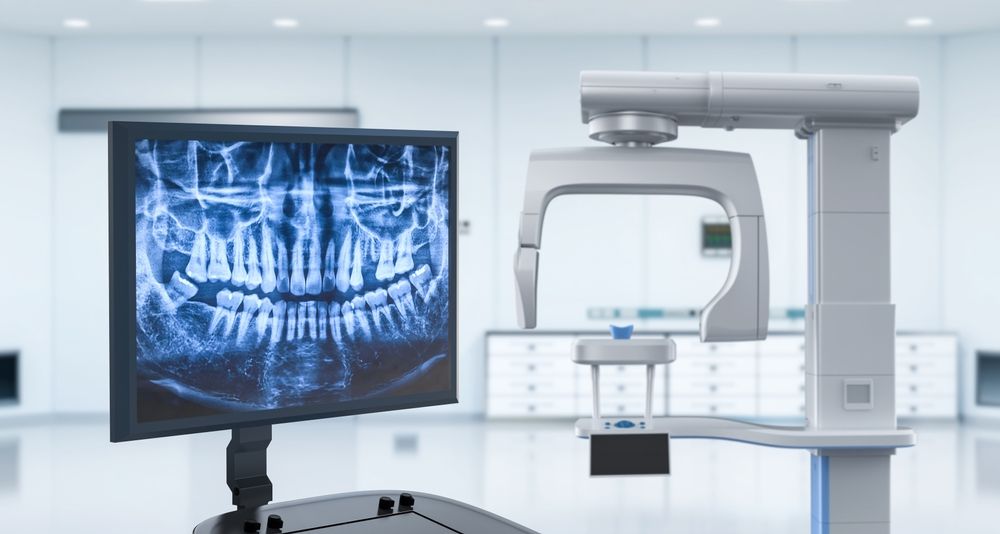Digital x-ray technology has transformed the way dental professionals diagnose and monitor oral health. At Tulsa Precision Dental, Dr. Chris Vinson and his team recognize the importance of innovative imaging techniques in enhancing patient outcomes. Unlike traditional film x-rays, which require time-intensive processing and chemical development, digital x-rays deliver instant, high-resolution images that improve diagnostic accuracy. This shift from analog to digital imaging has also led to improved communication between dental providers and patients, as images can be displayed in real-time during appointments.
The roots of digital x-ray technology date back to the late 20th century when dental professionals began experimenting with computerized imaging systems. Over the years, advancements in sensor quality, software, and data storage have refined the process, creating a more reliable and efficient imaging method. These improvements are particularly beneficial in dentistry, where the early detection of cavities, gum disease, and structural abnormalities is crucial for maintaining long-term oral health.
Key Benefits of Modern Digital X-Rays
One of the most significant advantages of digital x-rays is the reduction in radiation exposure. Digital sensors require far less radiation compared to traditional film-based x-rays, making the process safer for patients while still providing highly detailed images. This is especially important for patients who require frequent imaging due to ongoing dental treatments or chronic oral conditions.
Another notable benefit is the enhanced image quality and versatility of digital x-rays. The ability to zoom in, adjust contrast, and manipulate images provides dentists with a clearer view of the teeth, roots, and surrounding bone structures. This level of detail is invaluable for diagnosing problems that might not be visible with a standard visual examination. Additionally, digital images can be stored and retrieved easily, enabling better record-keeping and facilitating simplified collaboration with specialists.
Types of Digital X-Ray Systems
Intraoral X-Rays
Intraoral x-rays are the most common type of dental imaging and are essential for identifying cavities, monitoring tooth development, and assessing the health of surrounding bone. The digital sensors used in intraoral imaging are designed for precision and comfort, making the process both accurate and patient-friendly.
Extraoral X-Rays
Extraoral x-rays, which include panoramic and cephalometric images, capture larger views of the jaw, skull, and surrounding structures. These images are handy for orthodontic planning, evaluating wisdom teeth, and diagnosing jaw disorders. Modern digital extraoral x-ray machines are faster and produce more explicit images than their older counterparts, contributing to more accurate treatment planning.
How Digital X-Rays Improve Diagnostics
Digital x-rays play a crucial role in detecting issues early, often before symptoms appear. Dentists can identify small cavities, fractures, and bone loss that may not be visible during a physical exam. The ability to manipulate digital images—such as enhancing brightness or zooming into a particular area—provides a level of detail that traditional x-rays cannot match.
For complex dental cases, such as root canal treatments or implant placements, digital x-rays offer a clear roadmap for dentists. They can assess bone density, root structure, and the precise location of nerves, ensuring safer and more effective procedures. This diagnostic accuracy not only improves treatment outcomes but also reduces the need for repeat imaging, saving time and minimizing patient discomfort.
The Role of Digital X-Rays in Preventive Care
Preventive care is a cornerstone of modern dentistry, and digital x-rays are a powerful tool for maintaining oral health. They enable dentists to monitor changes in teeth and bone over time, helping to identify early signs of decay, gum disease, or other issues that may require intervention.
Digital x-rays also support patient education. When patients can see clear images of their dental conditions, they are more likely to understand the importance of recommended treatments. This collaborative approach fosters better patient compliance and promotes long-term oral wellness.
Future Innovations in Digital Imaging
Digital x-ray technology continues to evolve, with advancements focusing on improved resolution, faster image processing, and even lower radiation exposure. The integration of 3D imaging and cone-beam computed tomography (CBCT) is becoming increasingly common, providing dentists with a three-dimensional view of the oral cavity for complex procedures such as implant placement.
Artificial intelligence (AI) is also playing an emerging role in digital imaging. AI-powered software can assist dentists in detecting abnormalities and predicting potential issues with remarkable accuracy. As these technologies continue to mature, patients can expect even safer, more precise, and efficient dental care.
What Patients Should Know About Digital X-Rays
Digital x-rays are a safe, efficient, and highly reliable diagnostic tool. While the concept of x-rays may seem intimidating to some patients, understanding the significantly reduced radiation levels and the benefits of early detection often eases concerns. Patients should also know that digital images are stored securely and can be easily shared with other dental professionals when necessary.
At Tulsa Precision Dental, the emphasis is always on providing education to patients. By learning more about advancements like digital x-rays, patients can feel more confident in the care they receive and make informed decisions about their oral health.
Closing Thoughts on Modern Dental Imaging
Digital x-ray technology is a cornerstone of modern dentistry, offering unparalleled accuracy, efficiency, and safety. The advancements in imaging tools have not only improved diagnostics but have also enhanced preventive care and patient education. At Tulsa Precision Dental, Dr. Chris Vinson and his team recognize the value of these innovations in creating healthier, longer-lasting smiles for the Tulsa, OK, community. By understanding the capabilities and benefits of digital x-rays, patients can take a proactive role in their dental health.
Resources:
- White, S. C., & Pharoah, M. J. (2014). Oral Radiology: Principles and Interpretation. Elsevier Health Sciences.
- Farman, A. G. (2005). Digital Radiography: The Bottom Line. Journal of the American Dental Association.
- Wenzel, A. (2006). Digital Radiography and Caries Diagnosis. Dento Maxillo Facial Radiology.




